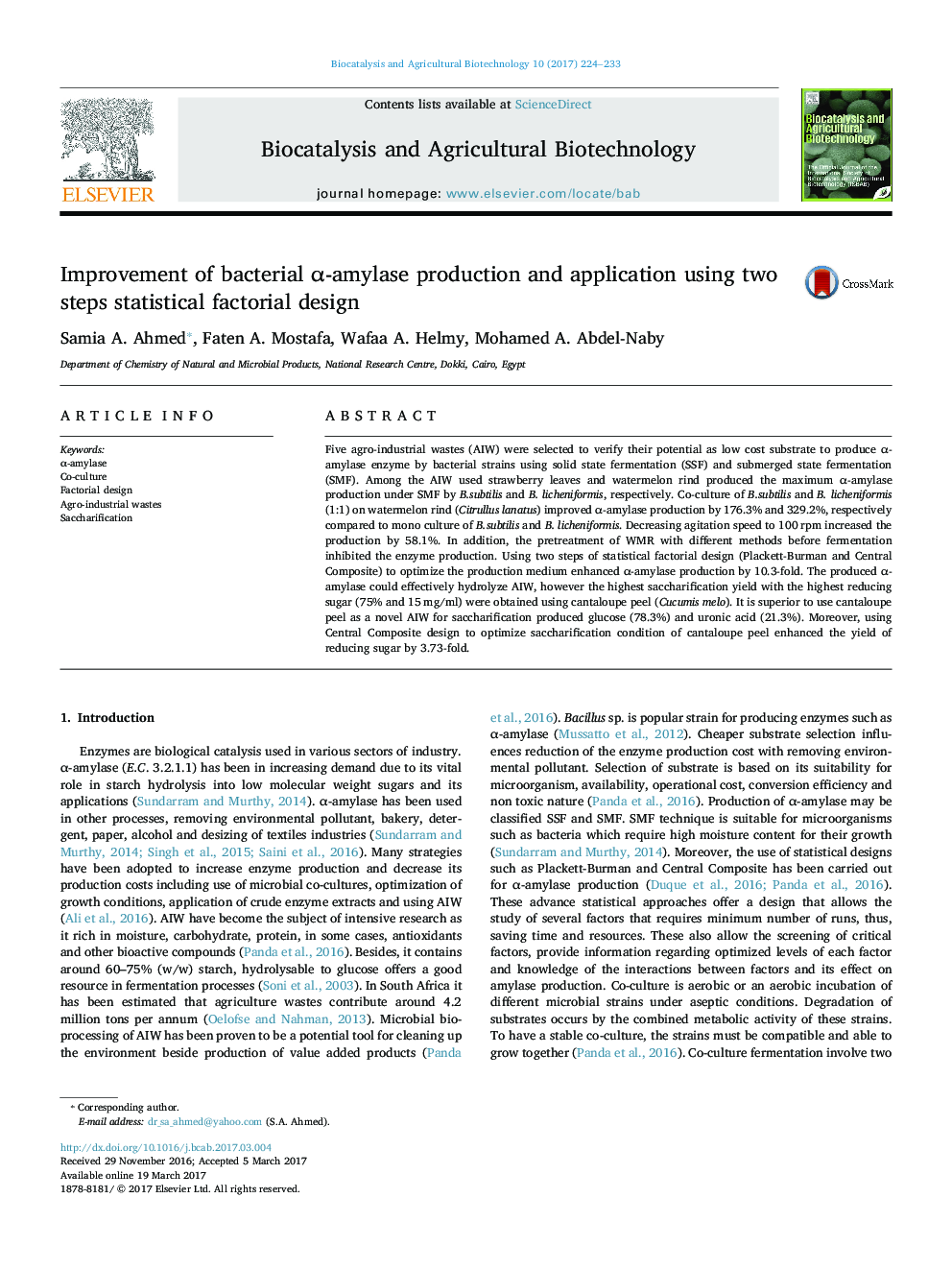| Article ID | Journal | Published Year | Pages | File Type |
|---|---|---|---|---|
| 5520489 | Biocatalysis and Agricultural Biotechnology | 2017 | 10 Pages |
Five agro-industrial wastes (AIW) were selected to verify their potential as low cost substrate to produce α-amylase enzyme by bacterial strains using solid state fermentation (SSF) and submerged state fermentation (SMF). Among the AIW used strawberry leaves and watermelon rind produced the maximum α-amylase production under SMF by B.subtilis and B. licheniformis, respectively. Co-culture of B.subtilis and B. licheniformis (1:1) on watermelon rind (Citrullus lanatus) improved α-amylase production by 176.3% and 329.2%, respectively compared to mono culture of B.subtilis and B. licheniformis. Decreasing agitation speed to 100 rpm increased the production by 58.1%. In addition, the pretreatment of WMR with different methods before fermentation inhibited the enzyme production. Using two steps of statistical factorial design (Plackett-Burman and Central Composite) to optimize the production medium enhanced α-amylase production by 10.3-fold. The produced α-amylase could effectively hydrolyze AIW, however the highest saccharification yield with the highest reducing sugar (75% and 15 mg/ml) were obtained using cantaloupe peel (Cucumis melo). It is superior to use cantaloupe peel as a novel AIW for saccharification produced glucose (78.3%) and uronic acid (21.3%). Moreover, using Central Composite design to optimize saccharification condition of cantaloupe peel enhanced the yield of reducing sugar by 3.73-fold.
